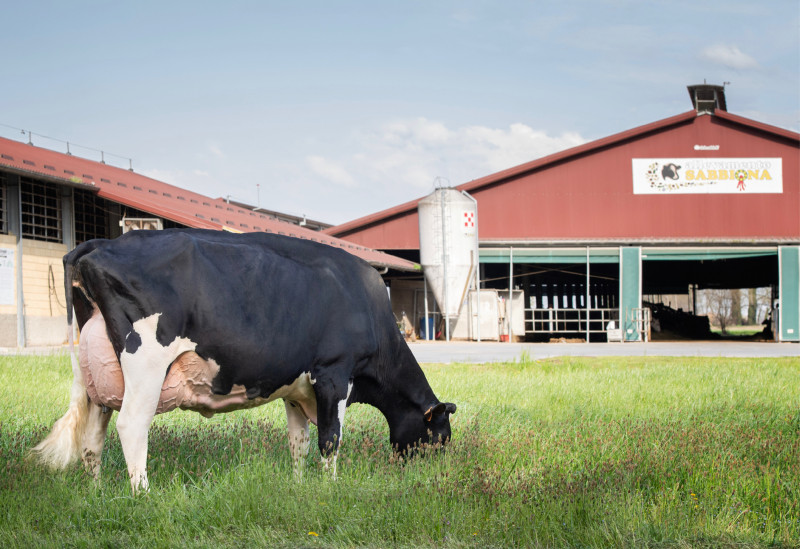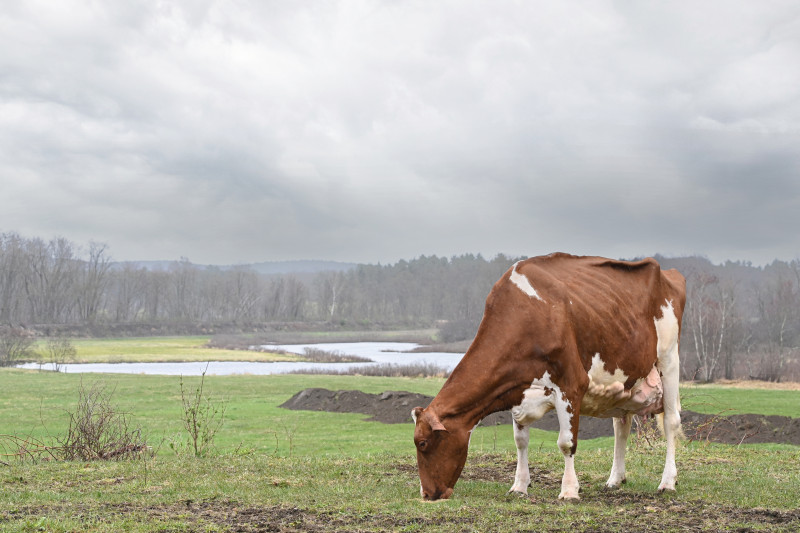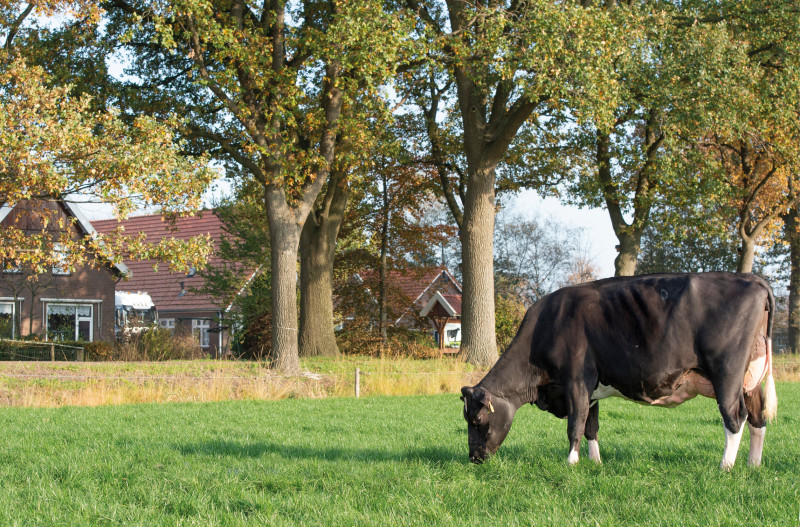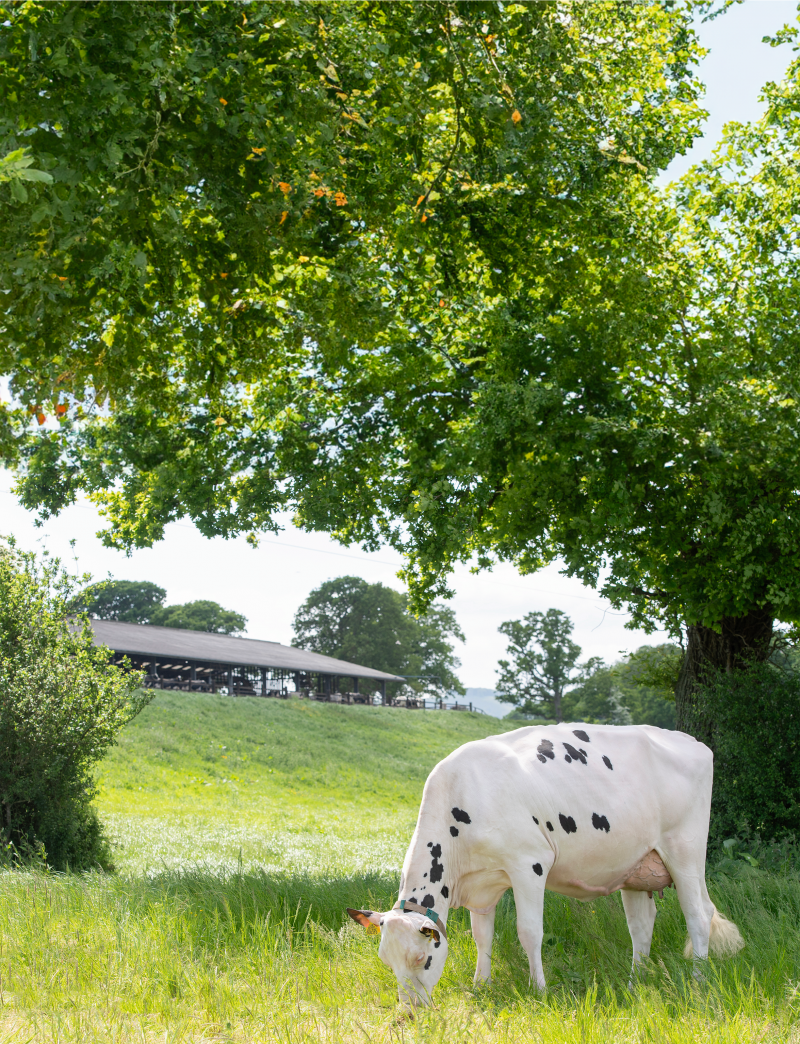
Huddlestone Monument Janice-P VG-86, like many of the cows in the Gue herd, displays a special pedigree. This Bomaz Monument-P daughter has daughters of VH Balisto Brook, Grafit and Morningview Levi in her maternal line,
‘Many people look at the linear profile of sires for individual traits, while it is actually about the balance between traits....’ Keith Gue enjoys talking openly about current breeding themes and about the breeding strategy of his family enterprise of Huddlestone Farm in West Sussex, where twenty years ago they started on the road towards a smaller Holstein cow. The British total index PLI is primarily used for sire selection at the Gues, as are lower body weights and higher feed efficiency. With the breeding goal of functional, very balanced, and fertile cows, who at a younger age already are able to complete various lactations.
BERT WESSELDIJK HAN HOPMAN
‘Our cows have the nicest view of all Sussex…’ With a big smile, Keith Gue guides us into his free stall barn. These introductory words by the friendly Englishman are not an overstatement. The farm close to Steyning – as the crow flies, just five kilometres from the coast – is built on a hill, and with the open sides offers a phenomenal panoramic view of the valley. By the way, the 450 milking Holsteins at Huddlestone Farm not only have a nice view, they also enjoy a spacious, fresh environment with lots of cow comfort. Since this past January, milking is being done by eight robots, to the great satisfaction of the Gue family – Keith manages the enterprise together with his brothers Matt and Ryan and his parents Tim and Marion. ‘Since the switch to automatic milking, production has risen by 10% to an average of 41 kg/91 lb per day. Of the entire herd, just two cows turned out to be unsuitable for the robot,’ says Keith, who indicates that there is one milking robot for the group of 40-45 fresh cows, and that the rest of the herd is divided into three production groups; milking two year olds, young cows, and mature cows. ‘With the arrival of the milking robots, there is a lot more peace and quiet in the barn, and we have made significant progress with hoof health. Cows no longer need to stand in a holding area and thus experience less stress.’
SMALLER
The Gues are authentic and progressive. In their management, but certainly also in breeding. In the area of genomics, they are among the pioneers in their country; already since 2011, all of the animals on the farm are DNA tested. About twenty years ago, the breeding strategy was modified drastically. ‘We have reduced stature,’ summarizes Keith concisely. And then continues with: ‘We want cows that are smaller, while maintaining the right ratio. We never look at linear traits on their own, but at the right combination of stature and chest width. We prefer to use sires with -1.0 to -1.5 stature and 0 to -0.5 chest width. The difference between stature and chest width should be a minimum of one standard deviation, then you end up with the right ratio in the cow.’ Right away, Keith points to Huddlestone Outback Steffi, who in her second lactation is projected at 13,000 kg/28,660 lb 4.5% 3.5%. Her DNA figures display -3.36 stature and -1.30 chest width. ‘That cow is not much taller than a Jersey, but she is the most efficient cow in the entire herd,’ says Keith about the Outback daughter out of a Solaris-Shamrock dam. ‘They are the cows that we want, cows with those ratios!’ With sire selection, the Gue’s choose high PLI sires which lean towards lower body weight and higher feed efficiency. About sires with above average stature, Keith states: ‘Such a sire needs to be enormously attractive for us to use him. And then only if he also transmits plenty of chest width.’
DIVERSITY
When selecting female donors (15-20 ET heifers annually), they also make use of the PLI ranking. ‘In the first place, we aim for the highest indexing animals, subsequently we scan the rest of the list, selecting for lower ranked animals if they are polled or have a weird pedigree,’ tells Keith. As an example, he mentions Huddlestone Avery Collette (768 gPLI): Denovo Avery (<Crimson) x Glamour Boghill Victor (<Verona) x Larcrest Comment (<Balisto) x Borussia (<Butch). ‘Our goal is to have as much diversity as possible in our flushing program, both on the male and female side. In order to spread risk and maintain as many lines as possible. The fifteen current donors come from eleven different maternal lines, and we have pregnancies from 27 different sires.’ That unique pedigrees can result in breeding sales is underscored by a set of Huddlestone sires who recently left for Genus. Huddlestone Slindon and Pyecombe are sons of Invictus and Plinko out of an Applejax-Fantasmic-Danillo dam. Both sires display a DNA profile with high figures for fertility and combine -2.02 and -1.06 stature with -0.73 and +0.80 chest width respectively.
PEAK PRODUCTION
For years, fertility and longevity have received above average attention in the Gue herd. ‘Selection for fertility and longevity give us production,’ tells Tim. ‘Many breeders say: if you breed for conformation, the production happens by itself. We think precisely otherwise: with a focus on longevity and fertility, you end up with a higher production. By selecting for fertility, cows become pregnant more easily, and come into peak production sooner again.’ Keith adds to his father’s explanation: ‘We gladly have young “mature” cows. If you have fifth lactation cows that are just six years old, then you have “mature” cows that still look young. Who have produced relatively high volumes in peak periods.’ A herd with many older cows provides more milk, realize father and son Gue. An older herd results in more excellent cows. In 2021, Huddlestone (with 107 head) even shone in the top-10 farms with the most EX cows in Great Britain. And that while the sire selection is not focused on conformation. Actually, not at all. ‘Everything is more important than conformation,’ states Keith strongly. ‘With selection for conformation, you nearly always select for extremes, especially with the udder traits. This causes increasing stature and imbalanced body traits. And, that is exactly what we do not want. We are not asking for extreme udders or tall two-year-olds, we want animals that are good enough, and especially well-balanced,’ says Keith, who states that many people in breeding cannot interpret what a linear profile exactly indicates, and do not know how a cow ought to look at its foundation. Tim and Keith Gue are certainly concerned about good conformation, but everything comes down to the right balance, in their opinion. ‘Only mature cows become excellent. And only two-year-olds that are balanced develop into good mature cows.’ l

Huddlestone in Great Britain
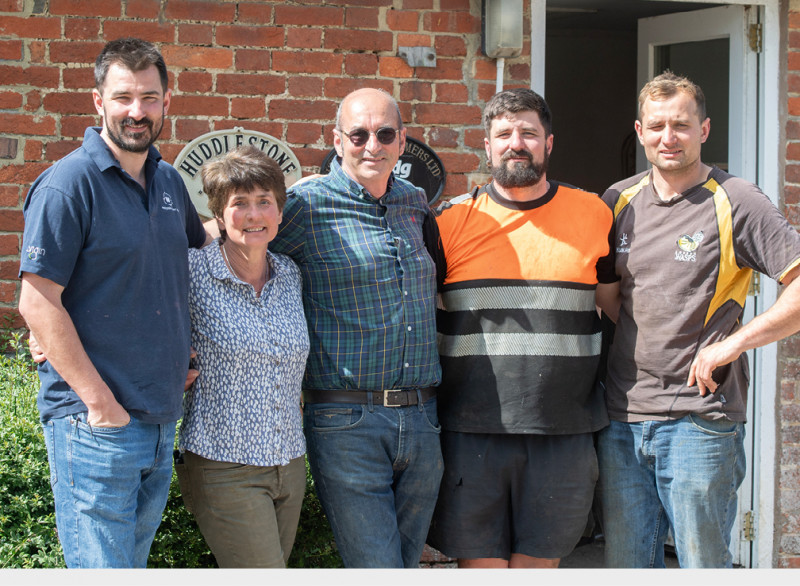
The Gue family manages Huddlestone Farm together; Tim & Marion and their sons Keith, Matt & Ryan.
Located in Steyning (West Sussex) in the southern part of England, five kilometres from the ocean and ten kilometres from the seaside resort of Brighton Owned by Tim, Marion, Keith, Matt & Ryan Gue 455 milking and dry cows, 300 head of young stock & 300 North Country Mule sheep 650 ha; grass, corn silage, barley, and wheat Ration: 50:50 grass silage and corn silage, canola, soya hulls, barley, molasses, flaked corn & maximum of 5.5 kg pellets Average daily production: 41 kg/90 lb 4.31% 3.39% (robot) Current sires: Denovo Highview, Denovo Leeds, Denovo Lennon-P, DG Peace, Peak AltaKalon, Peak AltaMorpheus, Peak Powerhouse, Pine-Tree Denovo Aleo, Stgen Frenzy Kyron-P, Wilra SSI Faneca Ebersol, Winstar Maserati-P
